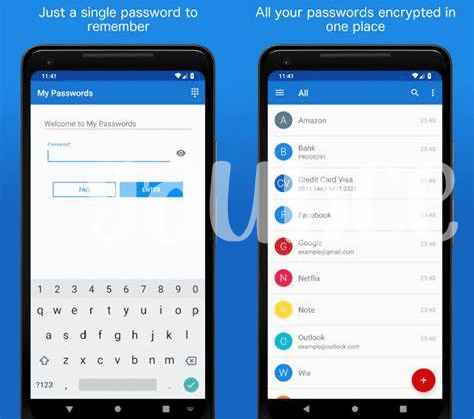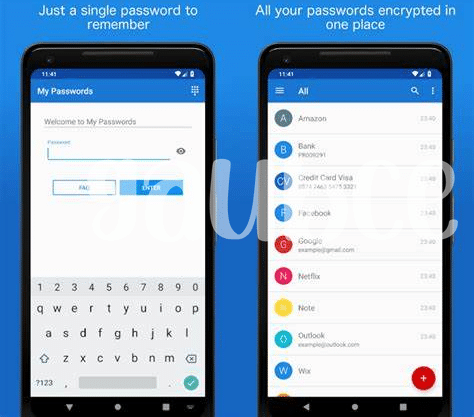- The Evolution of Android Security 🌐
- The Rise of Biometric Authentication 🤳
- Benefits of Biometric Password Apps 🛡️
- User Experience and Ease of Use 🖐️
- Addressing Concerns and Limitations 🤔
- Future Prospects and Potential Developments 🚀
Table of Contents
ToggleThe Evolution of Android Security 🌐
The Evolution of Android Security 🌐
Android security has come a long way since its inception, constantly evolving to meet the ever-changing landscape of cyber threats. In the early days, security measures primarily focused on protecting devices from viruses and malware. However, as technology advanced, so did the need for more robust security solutions. The introduction of features such as app sandboxing, secure boot, and device encryption marked a significant shift towards a more comprehensive approach to Android security. Gradually, Android evolved to incorporate advanced authentication methods, including fingerprint recognition and facial recognition, providing users with enhanced protection against unauthorized access.
| Year | Milestone |
| —— | ———————————– |
| 2008 | Introduction of Android OS |
| 2011 | Implementation of app sandboxing |
| 2014 | Addition of device encryption |
| 2017 | Integration of biometric authentication |
This evolution reflects a concerted effort to stay ahead of emerging security threats and adapt to the changing needs of users. As mobile devices continue to play an increasingly integral role in both personal and professional spheres, the evolution of Android security remains a crucial aspect of the overall technology landscape.
The Rise of Biometric Authentication 🤳
Biometric authentication has rapidly gained popularity as a secure and convenient method for Android users to access their devices and apps. With the increasing concern over traditional password security, biometric authentication offers a more reliable and user-friendly solution. Users can now conveniently unlock their devices and access sensitive information using fingerprint, facial recognition, or iris scanning technologies, providing a seamless and hassle-free experience. The integration of biometric authentication into Android devices represents a significant advancement in enhancing overall security while also simplifying the user experience.
Furthermore, biometric authentication eliminates the need for users to remember complex passwords, thereby reducing the risk of unauthorized access and potential security breaches. As we move towards a more connected and digitized future, the rise of biometric authentication is poised to revolutionize the way we secure our Android devices and protect our personal information, ultimately shaping the future of Android security.
Link: What is the best emoji app for Android in 2024?
Benefits of Biometric Password Apps 🛡️
Biometric password apps bring a host of benefits to Android users, enhancing security and ease of access in a seamless way. With biometric authentication, users can enjoy a higher level of protection for their devices and sensitive information. The convenience of using a fingerprint or facial recognition to unlock apps and access accounts also adds a layer of simplicity to the overall security process. In addition, biometric password apps eliminate the need to remember complex passwords, reducing the risk of unauthorized access due to weak or forgotten passwords. Moreover, these apps provide a more personalized and tailored user experience, enhancing overall security while simplifying the authentication process.
User Experience and Ease of Use 🖐️
The use of biometric password apps offers a seamless and hassle-free user experience, revolutionizing security on Android devices. With a simple touch of a finger or a quick glance, users can easily access their devices without the need to remember complex passwords. This level of convenience enhances the overall user experience, eliminating the frustration of forgotten passwords and the time-consuming process of typing them in. The integration of biometric authentication provides a more intuitive and natural way for users to interact with their devices, promoting ease of use and accessibility.
To find out what the best emoji app for Android in 2024 is for your phone, check out this resource.
Addressing Concerns and Limitations 🤔
Biometric-enabled password apps offer a promising solution to Android security concerns, but they also come with their own set of limitations and concerns. One of the common concerns is the potential vulnerability of biometric data. While biometric authentication provides a convenient and secure way to access devices and apps, storing and processing this sensitive data raises privacy and security issues. Additionally, there are concerns about the reliability of biometric authentication in certain conditions, such as when users’ fingerprints are wet or dirty, or when facial recognition is hindered by poor lighting or facial obstructions.
Another limitation to consider is the lack of standardized implementation across different devices and platforms. This fragmentation may lead to compatibility issues and inconsistencies in the user experience, thereby affecting the widespread adoption of biometric password apps. It is essential for developers and manufacturers to address these concerns by implementing robust security measures to safeguard biometric data and by working towards universal standards for biometric authentication on Android devices.
| Concerns and Limitations |
|———————–|
|1. Potential vulnerability of biometric data|
|2. Reliability of biometric authentication in varying conditions|
|3. Lack of standardized implementation across devices and platforms|
Future Prospects and Potential Developments 🚀
The future of biometric-enabled password apps in Android security is full of promising prospects and potential developments. With ongoing advancements in biometric technology, we can anticipate even more reliable and secure methods of authentication. As biometric sensors continue to improve, we may see a wider range of biometric identifiers being utilized, providing users with more options for secure access. Additionally, the integration of artificial intelligence and machine learning algorithms could further enhance the accuracy and efficiency of biometric authentication systems, making them even more robust against potential security threats. Furthermore, the potential for seamless integration with other devices and platforms, as well as the incorporation of biometric authentication into various aspects of digital identity management, opens up a world of possibilities for the future of Android security. As these developments unfold, the role of biometric-enabled password apps is likely to become even more integral in safeguarding sensitive information and ensuring a smooth and secure user experience.




